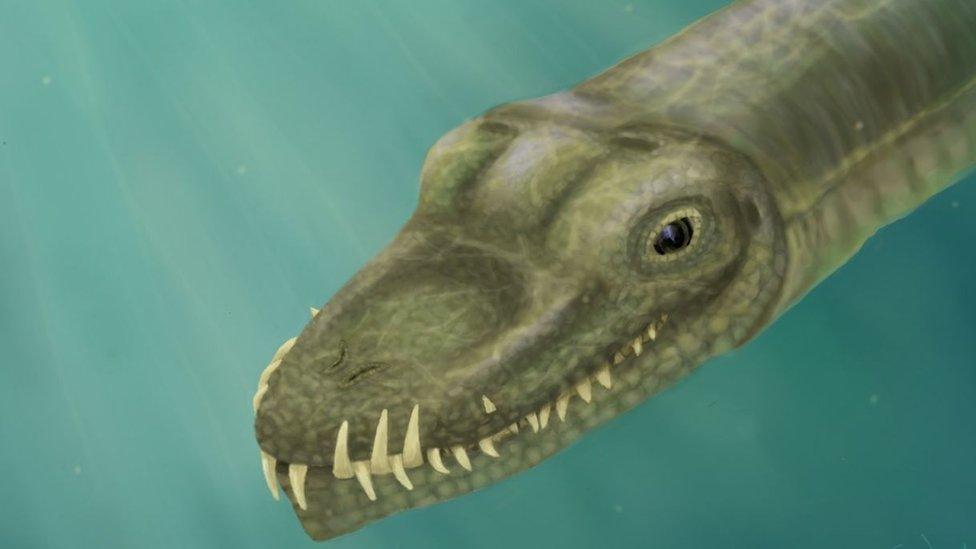Dinosaurs: Scientists say 'crocodile with a very long neck' lived in water 240 million years ago
- Published
- comments

An ancient reptile with a neck that was nearly twice the size of most giraffe necks may have lived in the sea, and not on land as previously thought.
The creature called Tanystropheus lived 240 million years ago and since its discovery scientists have debated whether the reptile lived on land or under water.
Its "bizarre body didn't make things clear one way or the other", they said.
The latest findings published in the journal Current Biology are thanks to a digital reconstruction of the crushed skull of the creature, which scientists say show "several very clear adaptations for life in water".
A digital reconstruction of Tanystropheus led scientists to believe the animal lived in the sea
The researchers found its nostrils to be located on top of the head, similar to that of modern-day crocodiles.
The animal's teeth were also long and curved, ideal to catch slippery prey such as fish.
Olivier Rieppel, a palaeontologist at the Field Museum in Chicago and one of the authors on the study, described the creature as "a stubby crocodile with a very, very long neck".
He added that the animal's body shape seemed a little odd when compared to the animals of today.
"It's just an awkward structure to carry around," he said.
Even though the creature is believed to have lived in the sea, researchers believe the Tanystropheus's body shape may have made the animal bad at swimming.
The creature's neck was longer than the size of a human
Long necks
Researchers estimate that Tanystropheus's neck was 10ft long, three times bigger than its body, and nearly twice the size of most giraffe necks.
But scientists say there are similarities between the two animals because the reptile's neck has so few bones just like a giraffe, which only has seven neck bones.
Tanystropheus had 13 long neck bones called vertebrae, meaning the creature's neck wasn't very bendy.
Stephan Spiekman, a palaeontologist at the University of Zurich in Switzerland and lead author on the study, said: "It likely hunted by stealthily approaching its prey in murky water using its small head and very long neck to remain hidden."
WATCH: What's the difference between all the dinosaur periods?
Tanystropheus lived 242 million years ago, during the middle Triassic period, when dinosaurs were just starting to emerge on land and giant reptiles dominated in the sea.
Remains of this creature were unearthed at Monte San Giorgio on the border between Switzerland and Italy.
Scientists have also found fossils in the area that look similar to Tanystropheus but are just 4ft long, however the researchers are still examining these remains to decide whether they are baby Tanystropheus, or an entirely different species.
- Published27 June 2020
- Published5 August 2020
